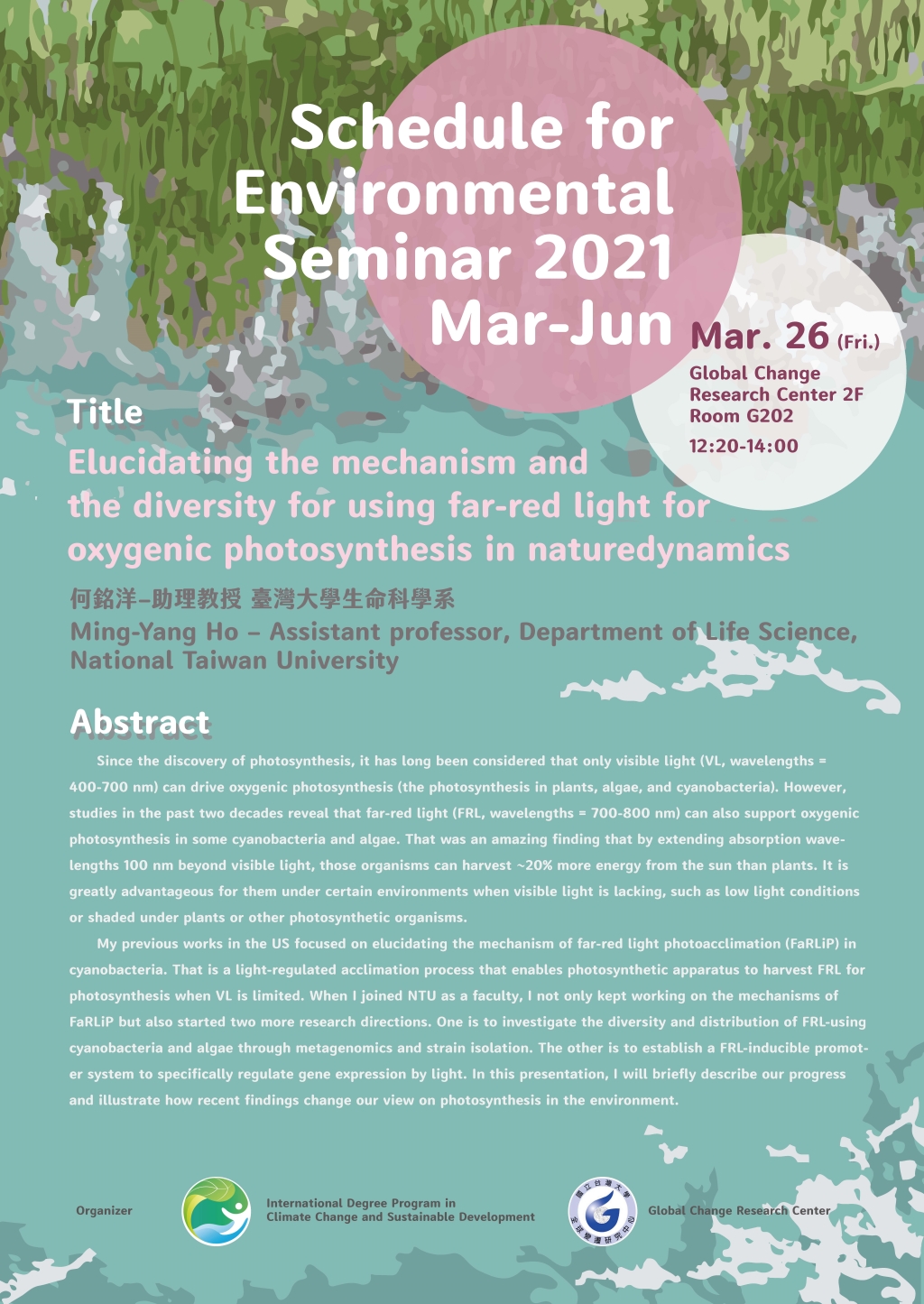- NEWS最新消息
- 演講
NEWS最新消息
2021/03/16
[演講] Elucidating the mechanism and the diversity for using far-red light for oxygenic photosynthesis
講題
Elucidating the mechanism and the diversity for using far-red light for oxygenic photosynthesis in naturedynamics
時間
2021/3/26 (五) 12:20-14:00
將此活動加到我的Google日曆
地點
Global Change Research Centre 2F room G202
講者
何銘洋助理教授 (臺灣大學生命科學系)
摘要
Since the discovery of photosynthesis, it has long been considered that only visible light (VL, wavelengths = 400-700 nm) can drive oxygenic photosynthesis (the photosynthesis in plants, algae, and cyanobacteria). However, studies in the past two decades reveal that far-red light (FRL, wavelengths = 700-800 nm) can also support oxygenic photosynthesis in some cyanobacteria and algae. That was an amazing finding that by extending absorption wave-lengths 100 nm beyond visible light, those organisms can harvest ~20% more energy from the sun than plants. It is greatly advantageous for them under certain environments when visible light is lacking, such as low light conditions or shaded under plants or other photosynthetic organisms.
My previous works in the US focused on elucidating the mechanism of far-red light photoacclimation (FaRLiP) in cyanobacteria. That is a light-regulated acclimation process that enables photosynthetic apparatus to harvest FRL for photosynthesis when VL is limited. When I joined NTU as a faculty, I not only kept working on the mechanisms of FaRLiP but also started two more research directions. One is to investigate the diversity and distribution of FRL-using cyanobacteria and algae through metagenomics and strain isolation. The other is to establish a FRL-inducible promoter system to specifically regulate gene expression by light. In this presentation, I will briefly describe our progress and illustrate how recent findings change our view on photosynthesis in the environment.
